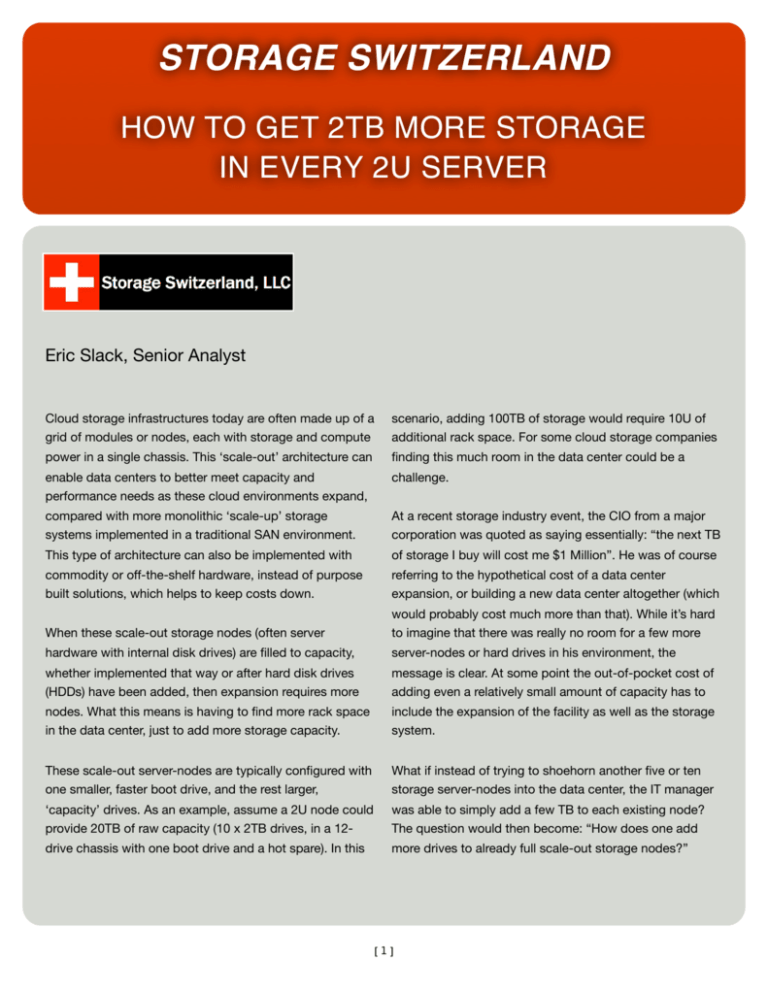
STORAGE SWITZERLAND
HOW TO GET 2TB MORE STORAGE
IN EVERY 2U SERVER
Eric Slack, Senior Analyst
Cloud storage infrastructures today are often made up of a
grid of modules or nodes, each with storage and compute
scenario, adding 100TB of storage would require 10U of
additional rack space. For some cloud storage companies
power in a single chassis. This ‘scale-out’ architecture can
finding this much room in the data center could be a
enable data centers to better meet capacity and
performance needs as these cloud environments expand,
challenge.
compared with more monolithic ‘scale-up’ storage
systems implemented in a traditional SAN environment.
At a recent storage industry event, the CIO from a major
corporation was quoted as saying essentially: “the next TB
This type of architecture can also be implemented with
of storage I buy will cost me $1 Million”. He was of course
commodity or off-the-shelf hardware, instead of purpose
built solutions, which helps to keep costs down.
referring to the hypothetical cost of a data center
expansion, or building a new data center altogether (which
When these scale-out storage nodes (often server
would probably cost much more than that). While it’s hard
to imagine that there was really no room for a few more
hardware with internal disk drives) are filled to capacity,
server-nodes or hard drives in his environment, the
whether implemented that way or after hard disk drives
(HDDs) have been added, then expansion requires more
message is clear. At some point the out-of-pocket cost of
adding even a relatively small amount of capacity has to
nodes. What this means is having to find more rack space
in the data center, just to add more storage capacity.
include the expansion of the facility as well as the storage
system.
These scale-out server-nodes are typically configured with
one smaller, faster boot drive, and the rest larger,
What if instead of trying to shoehorn another five or ten
storage server-nodes into the data center, the IT manager
‘capacity’ drives. As an example, assume a 2U node could
provide 20TB of raw capacity (10 x 2TB drives, in a 12-
was able to simply add a few TB to each existing node?
The question would then become: “How does one add
drive chassis with one boot drive and a hot spare). In this
more drives to already full scale-out storage nodes?”
[1]
The SSD DIMM
order to meet this range of configurations with fewer
hardware models. If a user needs more memory, they can
One way is to use a solid state drive on a DIMM module,
order the server configured that way. If their requirements
like Viking’s SATADIMM. These SSDs plug into any empty
DRAM DIMM socket and connect via a cable to a SATA
aren’t on the high end, they simply leave these DRAM
DIMM slots and even CPU sockets empty. In fact, servers
header on the motherboard or RAID card HBA. With this
simple implementation an empty DIMM socket can be
with DIMM sockets less than 50% full are not uncommon.
This would mean that many servers have 8-12 empty
viewed by the data center manager as an empty disk drive
DIMM slots, representing an equivalent of 8-12 empty drive
bay. Power is supplied by the DIMM socket and the I/O is
connected just as an HDD or SSD would be, via a SATA/
bays per server. One can confirm this by checking their
current inventory of servers and see how many empty
SAS cable. In this use case one SSD DIMM would replace
DIMM sockets they have.
an existing boot drive. Then the current boot drive could be
removed to make room for a high capacity SATA HDD, and
Putting an SSD into existing storage nodes can bring some
with it, another 2TB (or more) of available storage.
dramatic performance improvements too, such as
speeding up the page swapping process that used to rely
Adding 100 TB to the data center by putting a 2TB drive
into each of 50 existing storage server-nodes might just
on a slow, hard disk boot drive, as is described in another
Storage Switzerland article. In other cases, where more
meet the capacity expansion requirements that the IT
capacity is needed, more DIMM sockets may also be
manager is facing. If that 100 TB was the tipping point the
CIO above was referring to then this strategy could
available for additional SSDs, again, without having to
make the tradeoff between using up a hard drive bay for
postpone the capital expenditure (CAPEX) of a major
facilities project. Adding a solid state drive to existing
that performance boost.
scale-out storage server-nodes can bring some other
In scale-out storage architectures, SSDs may further
benefits as well. But are there really empty DIMM slots in a
typical commodity server chassis?
improve storage densities as well. These systems don’t
have a dedicated controller module, and instead spread
this storage processing workload out across each node.
When per-node performance is increased, as with the
Empty DIMM slots
addition of SSDs, the aggregate performance required may
Server manufacturers build their systems for maximum
be provided with fewer nodes, further improving the rackspace problem described above.
flexibility - flexibility for them as well as their customers.
There are a number of workload scenarios these server
vendors design around, some with higher memory capacity A ‘doable’ solution
requirements, such as virtualization hosts or hypervisors.
Others require less memory, a good example of which is
Optimizing one’s existing infrastructure is a sound policy;
the use case described above, where commodity server
products are used as scale-out storage nodes. But they’re
using what you have before buying more is a responsible
practice. Also, incremental solutions, such as adding an
used in traditional application environments with moderate
SSD on a DIMM module are often easier to get approved
memory requirements as well.
since it can be implemented in a piecemeal fashion, when
the funds are available. It can also be less disruptive to
In response to these varying scenarios, vendors build
upgrade one node at a time rather than rolling in several
motherboards to accommodate large amounts of DRAM, in new nodes at once.
[2]
Summary
A good alternative may be to add an SSD DIMM, to replace
the boot drive in each node and free up a drive bay for a
Scale-out architectures are excellent solutions for
high capacity disk drive. For cloud storage data centers
expanding the capacity of cloud storage infrastructures. As
complete nodes that include storage, network connectivity
this strategy can increase available storage by tens of TBs
without consuming any additional rack space. For
and processing power, they allow capacity to grow almost
without limit and performance to be tailored to that growth.
companies getting close to capacity in the data center,
putting an SSD DIMM, like Viking’s SATADIMM, in each
They also support the use of commodity hardware to keep
server may provide enough added capacity to postpone a
costs down.
data center expansion project by perhaps as much as a
year.
But scale-out storage expansion typically means adding
more servers-nodes, not just more drives, which means a
larger purchase. Eventually, more rack space can create a
need for more data center floor space and, in a worst case
scenario, adding a relatively small amount of capacity
could end up triggering a much larger capital expansion
project.
About Storage Switzerland
Storage Switzerland is an analyst firm focused on the virtualization and storage marketplaces. For more information
please visit our web site: http://www.storage-switzerland.com
Copyright © 2012 Storage Switzerland, Inc. - All rights reserved
[3]

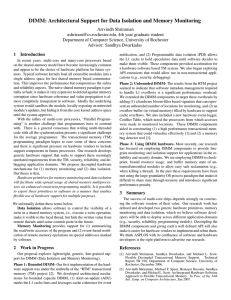
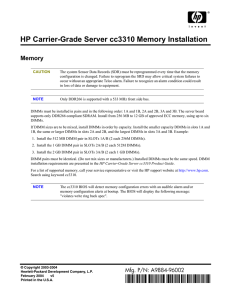
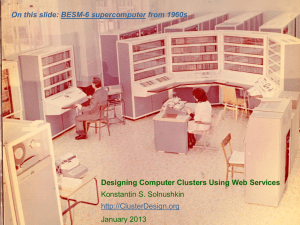
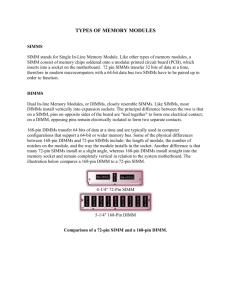
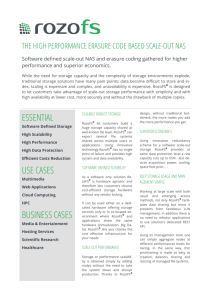




![Computer System Architecture [Opens in New Window]](http://s3.studylib.net/store/data/008592939_1-4f5ce0497d54935af6e3cd73e5af83bf-300x300.png)

